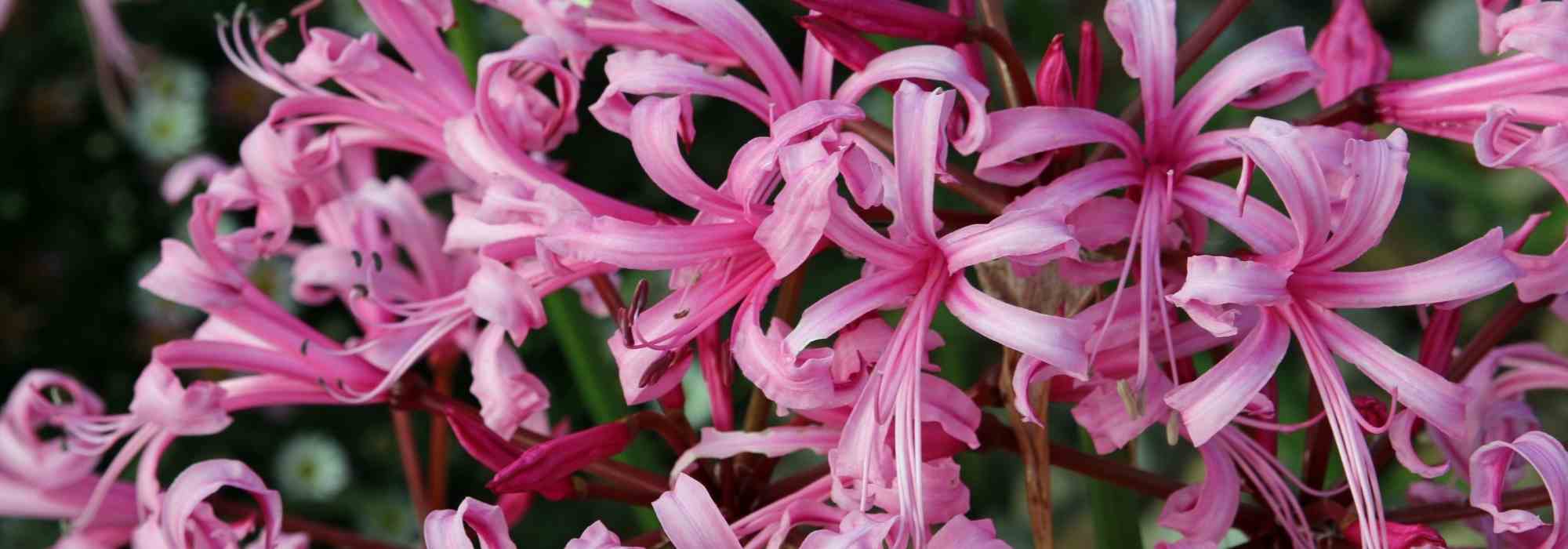
5 Nerines to discover
To plant in a pot or in the ground
Contents
Still relatively unknown, Nerines, also known as “Guernsey lilies,” offer one of the most beautiful and longest autumn flowerings! These are beautiful South African perennial bulbous plants valued for their very late flowering, often pink, like Nerine bowdenii, white, or red in Nerine sarniensis var. corusca. Related to Amaryllis belladonna and Agapanthus, they bloom from September to November, producing large umbels of delicately sculpted lily-like flowers, often shimmering. Their beauty is matched only by a certain frost sensitivity. These are medium hardy plants that thrive in the sun, sheltered from cold winds, with cultivation in open ground reserved for mild climates, and pot cultivation elsewhere.
Exotic or romantic in turn, they are stunning by the seaside, in an English cottage, or as a focal point on an autumn terrace.
Discover our selection of nerines, including some exclusive varieties, to adopt in open ground or in pots depending on your climate!
Nerine bowdenii ‘Pink Triomph’, the hardiest and most prolific
The Nerine bowdenii, or Bowden’s nerine species has given rise to numerous relatively hardy varieties, including the ‘Pink Triumph’ nerine, which is the most common in our gardens, likely because it is one of the few in the genus capable of withstanding frosts of around -10 to -12°C, in very well-drained soil.
More floriferous than its counterparts, it produces around ten flowering stems with a spread of 30 cm in diameter.
Its abundant flowering begins in late summer, in September-October, and lasts for more than 2 to 3 weeks. It boasts around ten umbels raised at the end of sturdy floral stems that reach 50 cm in height. The inflorescences take the form of very large lily-like flowers measuring 8 cm, larger than the typical type. They consist of narrow, undulating petals in a shimmering bright silver-pink, enhanced by a deeper pink midline. As with all nerines, the fine, ribbon-like foliage appears during or just after flowering. It is evergreen from autumn to spring, then becomes deciduous in summer.
Due to its relative hardiness, this variety can be integrated into borders in many regions alongside Crinum ‘Striped Beauty’ with white flowers striped with pink and Hibiscus syriacus ‘Hamabo’ with pale pink petals speckled with red-purple.
In the north of the Loire, it is preferable to grow it in beautiful terracotta pots that you can shelter in winter away from frosts.
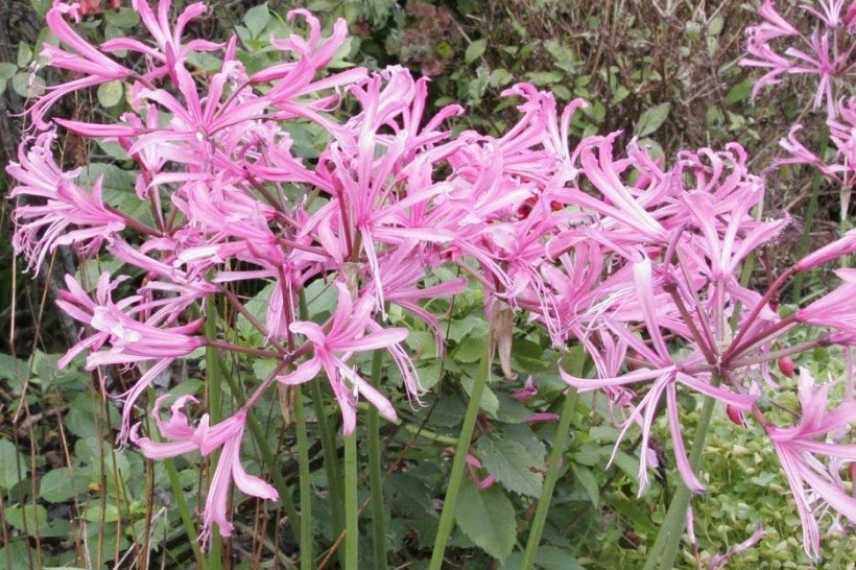
Nerine ‘Pink Triumph’
Read also
Nerine: planting, growing and careNerine undulata, rare and delicate
Here is a species of unparalleled delicacy! The Nerine undulata produces small flower clusters measuring about ten centimetres in diameter from October to November. They are adorned with small campanulate pink flowers with very undulate, narrow, and recurved petals, measuring 2 to 3 cm in diameter. Its spider-like appearance has earned this variety the nickname “Spider Lily”.
This small nerine reaches a height of 45 cm at maturity and is not very hardy (-5°C), which is likely why it is not widely cultivated. It is therefore best grown in pots to brighten up sunny terraces throughout autumn or possibly in the ground in regions with very mild climates, such as the Mediterranean coast and the Atlantic shoreline.
Its soft pastel hue adds a touch of freshness in the midst of autumn, and it pairs perfectly with the late flowering of asters and Japanese anemones in romantic scenes or to enhance an English garden.
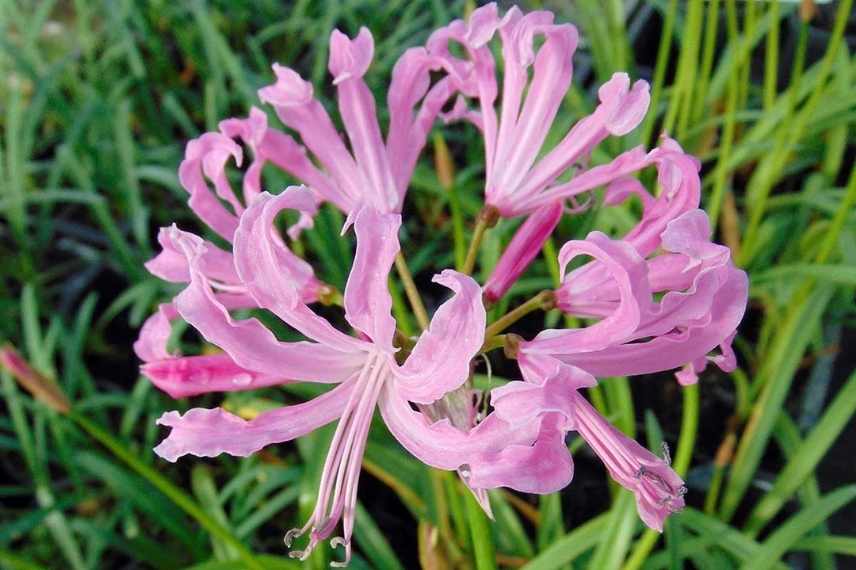
The delicate Crinkled Nerine or Undulate Nerine
Discover other Nerine
View all →Available in 0 sizes
Available in 1 sizes
Available in 1 sizes
Available in 1 sizes
Available in 1 sizes
Available in 1 sizes
Available in 1 sizes
Available in 1 sizes
Available in 1 sizes
Available in 1 sizes
Nerine sarniensis var. Corusca, one of the most beautiful
This is the true “Guernsey Lily” or “Jersey Lily”, the only nerine that can claim this name. This name is linked to its accidental naturalisation on the island of Guernsey following the shipwreck of a Dutch vessel carrying Nerine sarniensis bulbs in its hold. Nerine sarniensis var. corusca boasts an exceptional flowering!
This nerine develops more compact flower umbels than its relatives. Each flower stem reaches about 50 cm in height. Their star-shaped corollas consist of undulating, iridescent petals in gold and a sparkling reddish-orange. The long, prominent stamens that emerge enhance the exotic and precious appearance of this variety.
Its habit is vigorous, with sturdy flower stems, and the clumps of bright green foliage disappear at the end of spring when the bulb enters dormancy.
Not being the hardiest of all (down to -5/-7°C, in well-drained, light soil), in colder regions, it is essential to grow it in a large pot on a sunny terrace and bring it indoors for winter.
In sunny borders or rockeries in our most sheltered regions, you can, for example, accompany this nerine with Pennisetum alopecuroides ‘Black Beauty’, Gladiolus primulinus ‘Atom’, and canna with fiery colours like ‘Firebird’ to enhance the exotic aspect and create a stunning colour display.
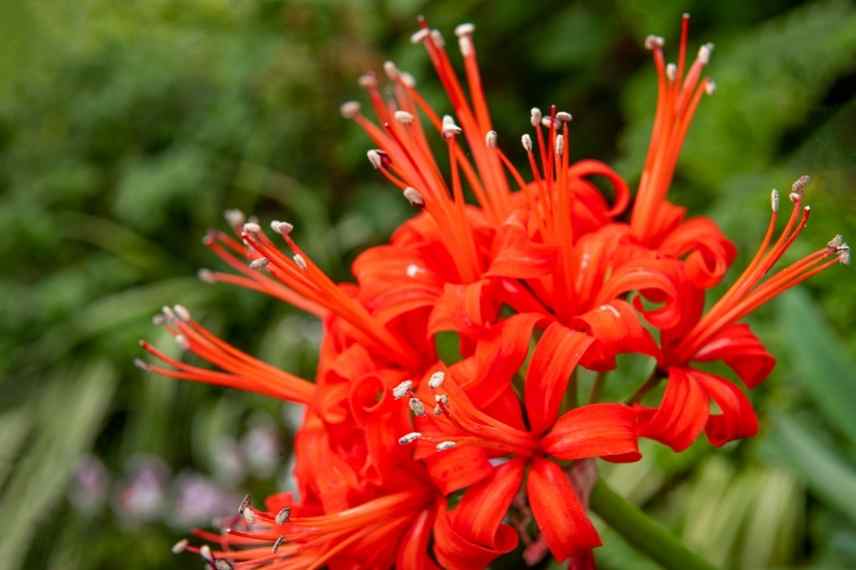
Nerine sarniensis var Corusca
Read also
7 rare and unique bulbsAmarine x tubergenii 'belladiva Aphrodite', the surprising hybrid bulb
Here is a very original Nerine, the Amarine x tubergenii ‘belladiva Aphrodite’, which appeared in the 1950s. This hybrid between Nerine bowdenii and Amaryllis belladona displays indeed magnificent dense umbels composed of particularly large star-shaped flowers, measuring 8 cm in diameter, perched atop robust stems, much like the Amaryllis.
Formed of 6 undulating and recurved petals, they bloom in a light and vivid candy pink. Their slightly translucent texture flirts with the light, and the long bright pink stamens that emerge at full bloom give these corollas an infinite lightness. The foliage consists of long ribbon-like leaves, a bright light green that persists almost all year in mild climates but disappears in July-August.
This variety boasts numerous advantages, just like its sister ‘Anastasia’: these Amarines are hardy to -12°C in very well-drained soil, making their cultivation in open ground possible in many regions if care is taken to choose a warm, sheltered location and to plant them in well-drained soil. However, in regions north of the Loire, it may be wiser to enjoy their beautiful flowers in pots, where they will majestically grace the terrace, allowing for easy storage in winter.
‘Aphrodite’ reaches a height of 70 cm during flowering and will bring freshness and a lot of originality to the borders until October. Pair it with Agapanthus, daylilies, and Crinum (x) powellii ‘Rosea’.
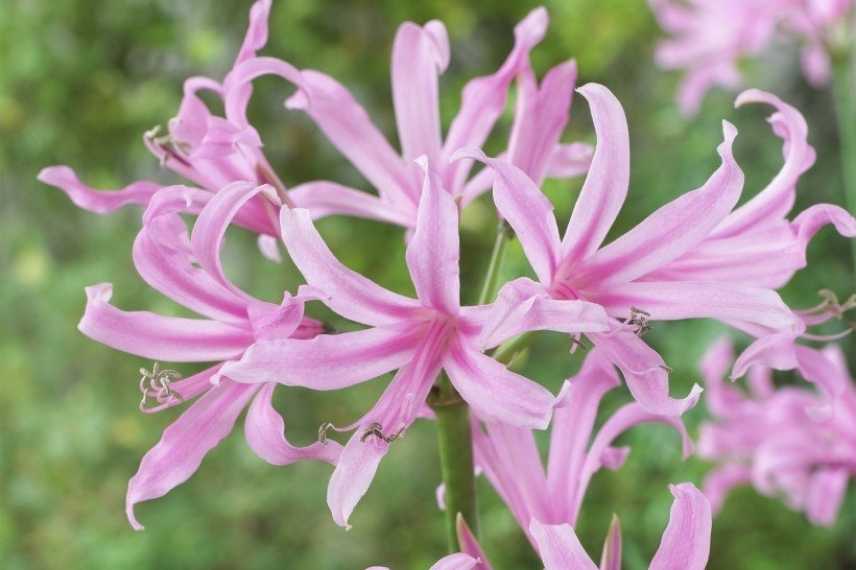
Amarine belladiva ‘Aphrodite’
Nerine ‘Elegance Pearls of Cherry’, a vibrant colour
Here’s another remarkably colourful nerine! ‘Elegance Pearls of Cherry’ produces umbels each containing 7 to 15 large 8 cm wide lily-like flowers. Each flower opens in a star-shaped trumpet of bright cherry-pink, marked with a darker central line. The narrow, undulating petals along the edges give this nerine a refined appearance, enhanced by long, vivid pink stamens.
Hardy down to -12°C, it acclimatises well in the ground in most regions. Majestic and colourful, this beautiful flowering bulb is ideal for adding flair to beds surrounded by a carpet of Oxalis triangularis and Sedum telephium ‘Chocolate Cherry’.
In the northern regions of the Loire, you can plant it in a large pot, which will also make it easier to protect during winter. This nerine allows for the easy creation of sumptuous exotic-looking containers, alongside agapanthus and cosmos, for example.
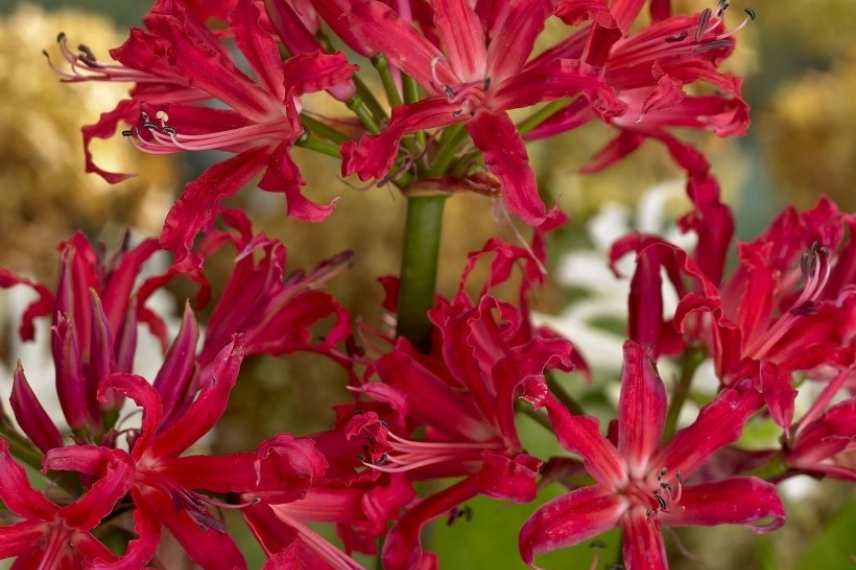
Nerine elegans ‘Pearls of Cherry’
For further reading
- Discover our collection of nerines, these stunning flower bulbs!
- Subscribe!
- Contents
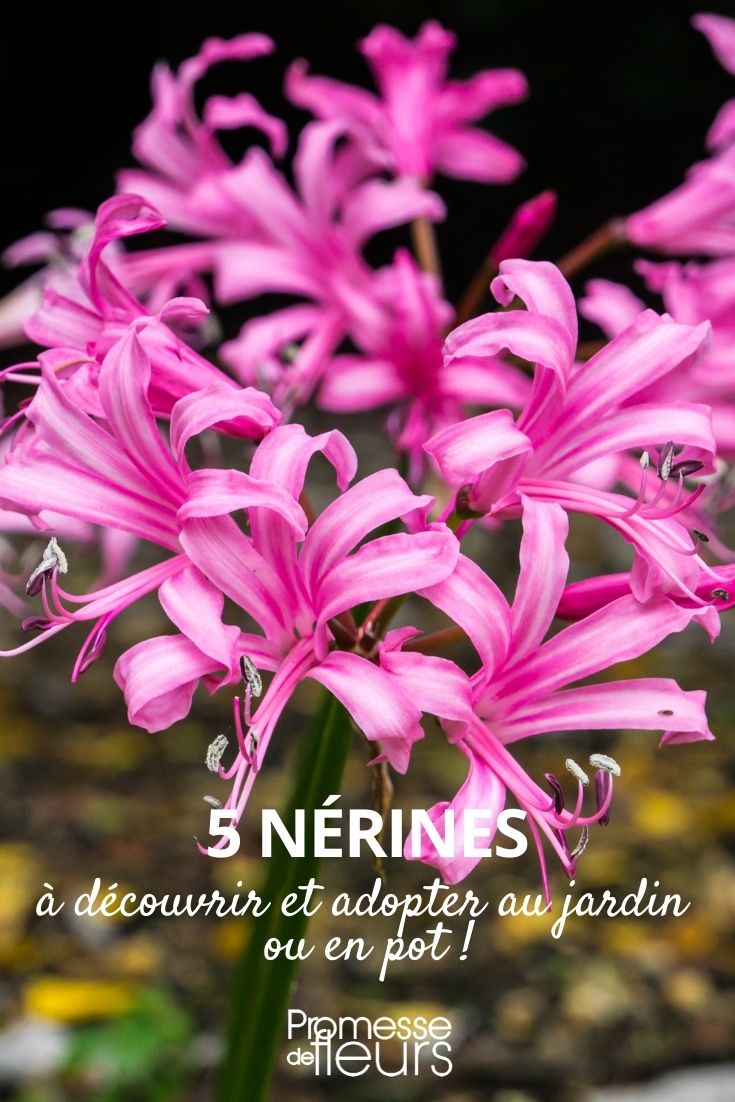































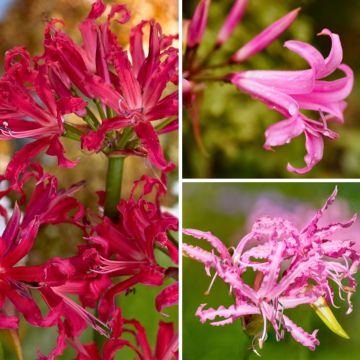
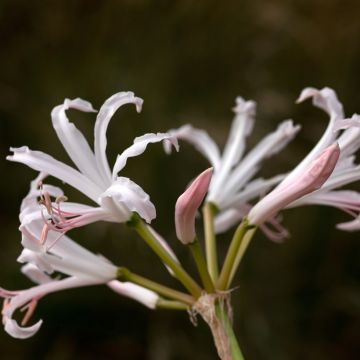
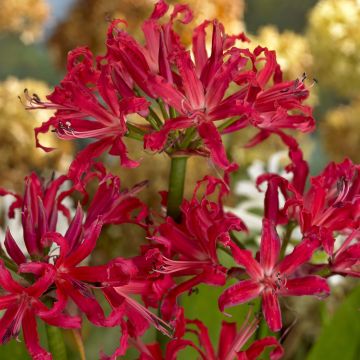
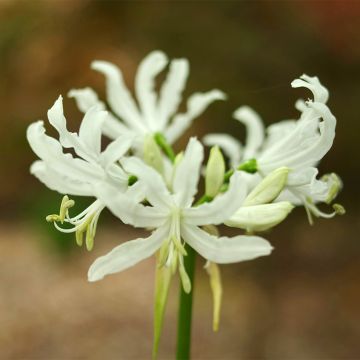
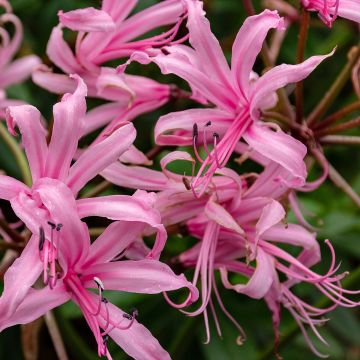
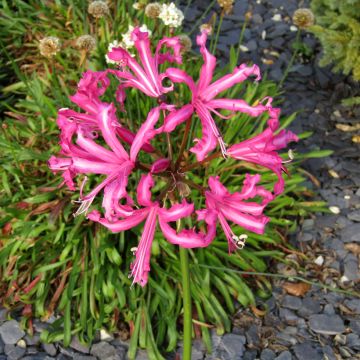
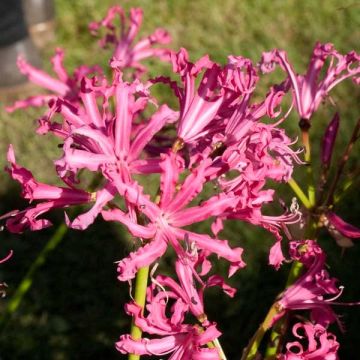
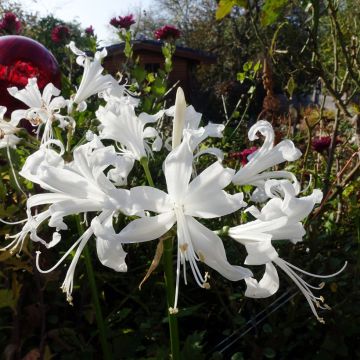
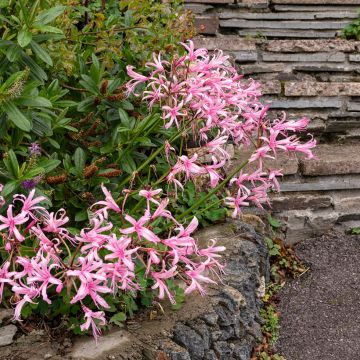
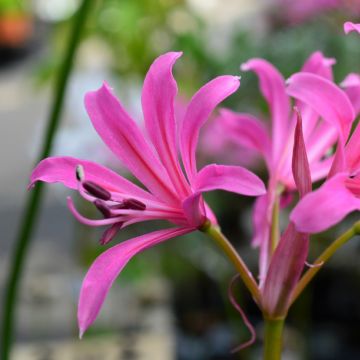
Comments